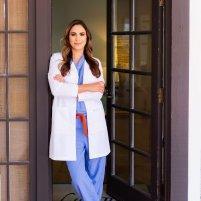Shoulder Arthroscopy

Parsa Orthopaedics & Sports Medicine Institute
Ronna S. Parsa, D.O.
Painful shoulder injuries can make it impossible to stay on the field in the sports you love, and the intense pain from shoulder maladies like rotator cuff tears and shoulder instability can also make it difficult to get good-quality sleep. At Parsa Orthopaedics & Sports Medicine Institute, serving Manhattan Beach, CA, Hermosa Beach, CA, Redondo Beach, CA, El Segundo, CA, Torrance, CA, Glendale, CA & Palos Verdes, CA, highly skilled arthroscopic surgeon Ronna Parsa DO offers the latest techniques in minimally invasive shoulder surgery, including superior capsule reconstruction (SCR). Schedule a consultation online or by phone to learn more about shoulder arthroscopy.
Shoulder Arthroscopy Q & A
Why do I need shoulder arthroscopy?
Dr. Parsa may recommend arthroscopy to repair rotator cuff injuries or shoulder instability due to labral tears. Arthroscopic surgery also effectively treats biceps tendinopathy, an inflammation of tendons around the biceps muscles that arises when repetitive overhead motions lead to tendon degeneration.
What is a rotator cuff injury?
Rotator cuff injuries are most commonly the result of repetitive overhead motions, such as in tennis and baseball. The risk of rotator cuff injuries also increases as you get older.
Dr. Parsa can repair rotator cuff injuries through arthroscopic shoulder surgery or a superior capsule reconstruction (SCR) procedure. SCR is useful in treating irreparable rotator cuff tears, reconstructing the tendons and muscles using a graft from another area of your shoulder.
What causes shoulder instability?
Shoulder instability is often the result of a labral tear that results from direct trauma to the shoulder, such as falling on an outstretched arm. You may also suffer a labral tear when trying to lift a heavy object. Tears can cause persistent pain, and you may notice a popping or grinding sound following an injury.
You may also lose strength in your arm and have a decrease in your range of motion.
What are the benefits of arthroscopic shoulder surgery?
Dr. Parsa makes small incisions in your shoulder and inserts an arthroscope, a slender device that has a camera and a light. She also inserts other surgically precise instruments to repair the affected ligaments and tendons and restore shoulder stability.
Arthroscopic surgery offers several benefits over traditional open surgery, including:
- Higher level of surgical precision
- Faster healing time
- Reduced risk of scarring
- Fewer complication risks
To learn more about the benefits of arthroscopic shoulder surgery, schedule a consultation online or by calling the office.
WHAT WE OFFER
Services
Sports Medicine
more info
Shoulder Arthroscopy
more info
Knee Arthroscopy
more info
Joint Preservation
more info
Progenitor Cell Therapy
more info
PRP Therapy
more info
Joint Replacement
more info
Fracture Care
more info
